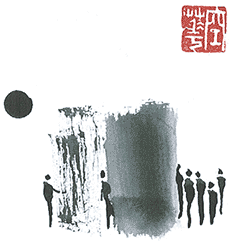Everything you wanted to know about Japanese characters
Hiragana was developed in the 8-10th century by simplifying the kanji symbols. The modern Japanese language has 46 Hiragana letters. These letters have more curved lines compared to Katakana letters. The 46 Hiragana letters are called gojuon in the Japanese language. Each Hiragana letter has a particular syllable though the letter has no meaning in itself. Those who are learning Japanese start with Hiragana and then move on to katakana and kanji.
Katakana is another set of Japanese alphabets. They are phonetic alphabets. Katakana characters represent almost the same set of sounds as Hiragana. Katakana however is used for foreign loan words. Katakana characters were also formed in the 8th century by simplifying the kanji symbols. However, there are many katakana letters that look just like the kanji symbol.
Kanji are the Chinese characters that are used in the modern Japanese language to form a sentence. Unlike Hiragana and katakana that have no meaning, in Kanji each character has a particular meaning. There are approximately 50,000 kanji out of which 2500 are used in every day life by the Japanese people.
One can learn Kanji only after learning Hiragana and Katakana. Whereas one can learn Hiragana and katakana is 3-4 days, it may take 1 to 3 years to learn kanji.
Romaji describes the sound of Japanese in Roman alphabets. Romaji was developed for the convenience of the foreigners who could not understand the Japanese language. In Japan, they write the name of the train station in Romaji along with the Japanese characters. One can read Romaji the way one reads the English text, though the pronunciation is not the same as English words and letters.
Japanese language has gained a lot of popularity in the last few years. If you can not read or write the Japanese language, you may avail the services for a Japanese interpreter or Japanese language translator for your business meetings, and conferences with Japanese colleagues. There are professionals who can carry Japanese German translation and Japanese Italian translation as well. Look for efficient and reliable Japanese translation services to enter in to business associations and partnerships with the Japanese.


Comments